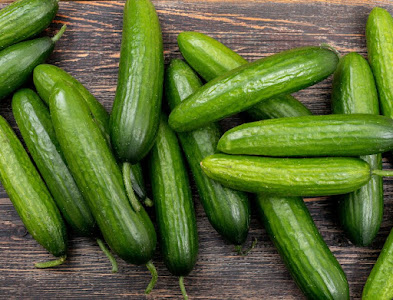How to Grow Lettuce?
Are you looking to add fresh, crisp greens to your salads or sandwiches? Growing lettuce at home is rewarding and straightforward, permitting you to enjoy the newest produce from your garden or even windowsill. Whether you're an experienced gardener or just starting, here's a comprehensive guide on how to grow lettuce successfully. 1. Choose the Right Variety:
Lettuce has various types, including leaf lettuce, romaine, and head lettuce. Consider your space, climate, and preferred taste when selecting the variety. For beginners, leaf lettuce varieties like loose-leaf or butterhead are often the easiest to grow. 2. Select a Suitable Location:
Lettuce thrives in cool temperatures and partial shade, especially during hot summer. Select an area in your garden that receives at least 4-6 hours of sunlight but is shielded from intense afternoon sun. 3. Prepare the Soil:
Ensure your soil is well-draining and rich in organic matter. Loosen the soil to a depth of at least 6-8 inches and incorporate compost or aged manure to improve its nutrient content. A little acidic to neutral pH between 6.0 and 7.0 is ideal for lettuce cultivation. 4. Planting: Direct Seeding: Sow lettuce seeds directly into the prepared soil, spacing them according to the variety's recommendations. Cover the seeds lightly with soil, gently pat down, and water thoroughly.
5. Transplanting:
If starting from seedlings, transplant them into the garden once they have developed a few true leaves. Dig holes bigger than the root balls and space the seedlings according to their mature size.
6. Watering:
Keep the soil consistently moist but not waterlogged. Water lettuce regularly, especially during dry periods, and avoid overhead watering to prevent leaf diseases. Mulching can help keep the soil moist and manage temperatures.
7. Maintenance:
- Thinning: When the lettuce seedlings have emerged, thin them to the suggested spacing to provide optimum circulation and prevent overcrowding.
- Fertilizing: Apply a balanced fertilizer or compost tea every 3-4 weeks to encourage healthy growth. Avoid high-nitrogen fertilizers, as they can promote excessive leafy growth at the expense of flavor.
7. Pest and Disease Control:
Keep an eye out for common pests like aphids, slugs, and snails and remove them as soon as possible, either by hand or with organic pest management methods. Proper spacing, air circulation, and soil moisture management can help prevent diseases like mildew and rot.
8. Harvesting:
- Leaf Lettuce: Begin harvesting outer leaves once they reach a desirable size, leaving the inner leaves to grow. Alternatively, you can cut the entire plant about an inch above the soil line for a continuous harvest.
- Romaine and Head Lettuce: Harvest the entire head once it reaches full size and shows no signs of bolting (going to seed). Remove the top off at the base with a sharp knife.
9. Storage: Enjoy your freshly harvested lettuce immediately for the best flavor and nutritional value. To store, wrap the leaves in moist paper towels and keep them in a perforated plastic bag in the fridge. Use within a few days for optimal freshness.
Growing Stages of Lettuce:
The growing stages of lettuce are crucial to understand for a successful harvest. Let's break down these stages:- Germination: Lettuce seeds germinate within 7-14 days under optimal conditions.
- Seedling Stage: Seedlings will develop their first true leaves within a few weeks. Continue to water and provide adequate sunlight.
- Growth and Development: As the lettuce plants mature, they produce more leaves. Harvest outer leaves as needed, or allow the plant to reach full maturity for a head of lettuce.
- Bolting: In warmer weather, lettuce may bolt or send up a flower stalk, signaling the end of its life cycle. Harvest the leaves promptly before they become bitter.
Companion Plants for Lettuce:
Companion planting is a gardening technique where different plant species are grown close to each other to benefit one another, whether by improving soil health, deterring pests, or enhancing pollination. When it comes to lettuce, choosing the right companion plants can promote overall garden health and increase the yield of your lettuce crop. Here are some excellent companion plants for lettuce:- Herbs: Planting basil, dill, and cilantro near lettuce can help repulse pests and attract helpful insects.
- Root Vegetables: Carrots and radishes are compatible with lettuce, as they occupy different levels of the soil and have similar water and light requirements.
- Alliums: Onions, garlic, and chives can deter pests that might otherwise bother lettuce plants.
- Leafy Greens: Spinach and arugula make excellent companions for lettuce, as they have similar growing requirements and can be harvested together for fresh salads.




Comments
Post a Comment